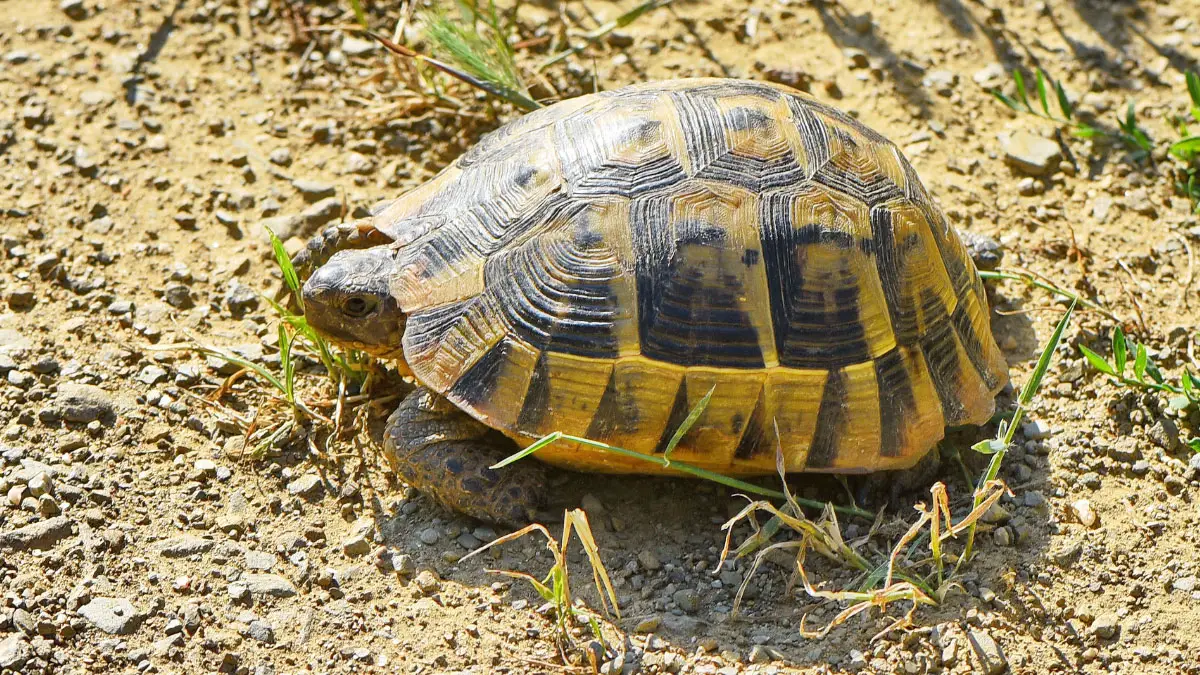Where Do Tortoises Live In The Wild? Everything You Should Know
Tortoises are a genus of reptiles known for having hard, protective shells and long lifespans that typically extend well over a century. They are found on every continent except Antarctica and Australia.
However, where do tortoises live in the wild? Tortoises live in a wide range of habitats, including grasslands, deserts, forests, and near oceans or seas. Generally, tortoises can be found in habitats that provide food, water, and warmth.
Keep reading to learn about different types of tortoise habitats, the dangers these habitats present, and how the reptiles are adapted.
Different Types Of Tortoise Habitats
Contents
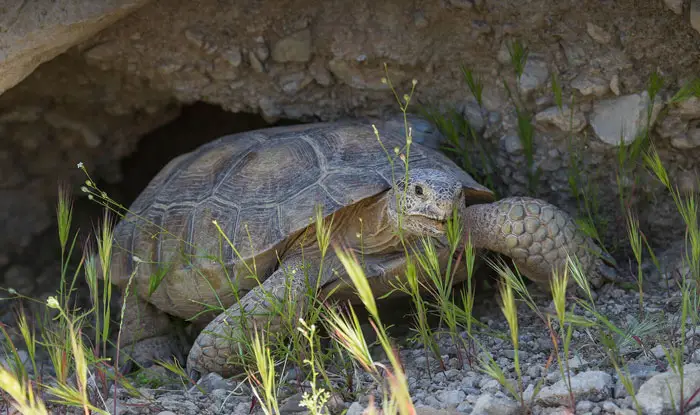
Tortoises live in many different habitats, with some of the most common being the following;
Dry grasslands
Grassland habitats are defined by their vast open areas covered with grass, small shrubs, and trees. These habitats are found on many continents, including Africa, North America, South America, and Asia.
The primary food source for tortoises living in grasslands is grass and shrubs. Grassland soils are known to contain appreciable amounts of moisture and nutrients. This content makes them ideal for digging and burrowing.
Deserts
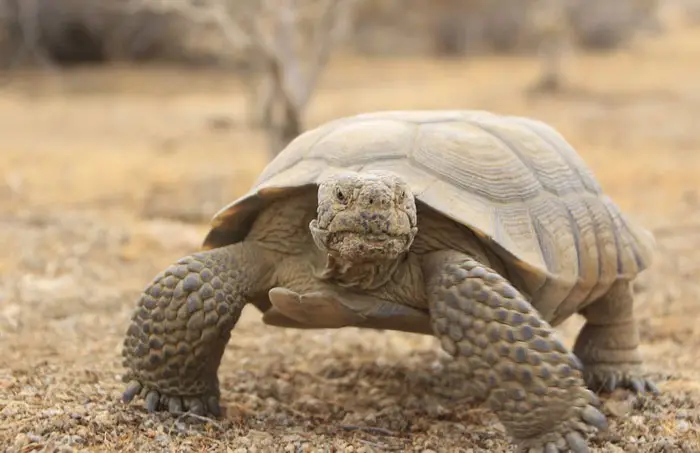
Deserts are one of the most challenging habitats to live in and are defined by the following characteristics;
- Low rainfall – These regions receive little to no rain, with some going for years before a single drop of rainfall is seen.
- Extreme temperatures – Desert daytime temperatures frequently exceed 100°F while nighttime temperatures drop to near zero.
- Vegetation scarcity – The extreme temperature fluctuations and lack of rainfall in deserts mean that only well-adapted plants like cacti can grow.
- Sand – The soil in deserts is predominantly sandy.
Coastal areas
Coastal tortoise habitats often have plenty of vegetation, including grasses, succulent plants, and shrubs. The climate is pleasant because it never gets too hot or too cold. Typically, several streams flow through these areas, so the tortoises can drink plenty of water.
The substrates in coastal habitats can be sandy beaches or rocks and pebbles.
Mountain habitats
These habitats are filled with various forms of vegetation, ranging from grasses to shrubs and trees. Mountain habitats also have rocks and loose soil, which are excellent substrates because they are easy to burrow.
The climate in mountain habitats doesn’t fluctuate as much as in deserts, but it is generally colder. Tortoises that live here obtain water from dew and small, seasonal streams.
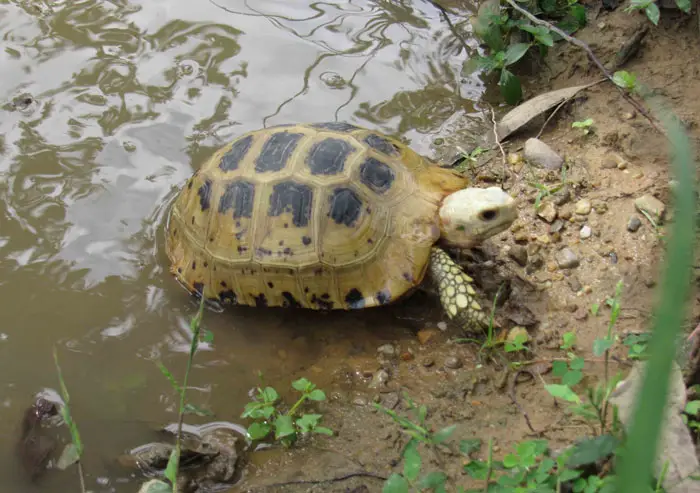
Wetlands
Wetland areas contain vegetation like grass, small trees, and shrubs. They have plenty of water for the tortoises living there. These areas are typically humid for most of the year. The substrate is made of muddy clay soils or soft sand.
Forests
Forests are characterized by dense vegetation that forms a thick canopy. This vegetation typically includes trees, shrubs, grasses, and herbs. These areas are humid all year round, so tortoises can obtain water from the dew that collects on plants.
The forest substrate consists of fallen leaves and topsoil, making it great for digging and burrowing.
How Are Tortoises Adapted To Their Wild Habitats?
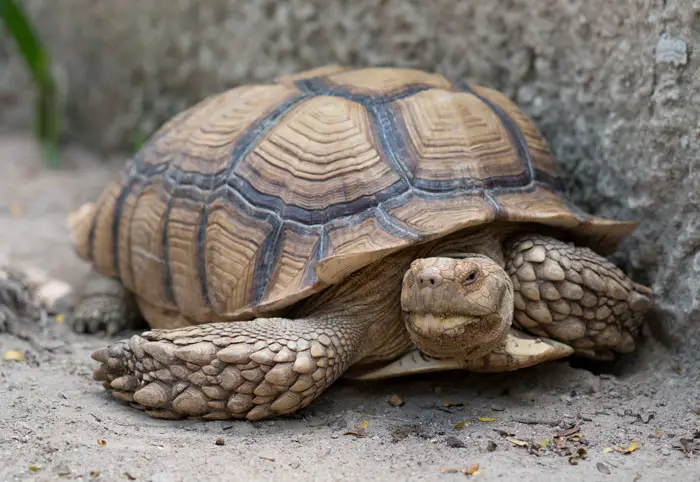
Tortoises have various adaptations that enable them to survive in their wild habitats. Examples include;
1. Shell
A tortoise shell is a protective outer covering that protects the animal from predators and harsh environmental conditions. The shell is so hard that predators find it extremely difficult to harm the reptile once the tortoise retracts inside.
Tortoise shells can also absorb heat and radiate it away. This ability is essential because it is crucial in a tortoise’s temperature regulation.
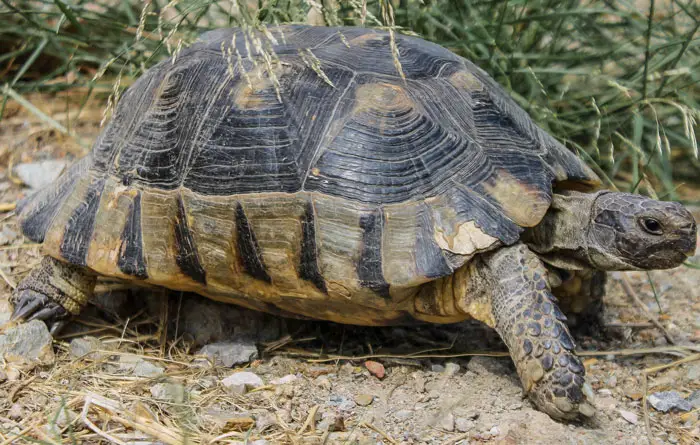
2. Diet
The diet of a tortoise species varies depending on habitat. Tortoises have adopted an omnivorous diet which allows them to eat insects and small animals when there are no plants to graze on.
3. Physiology
Some desert tortoises can stay without water for months because they can recycle the urine in their bladder. These tortoises can withstand having high amounts of urea in their blood.
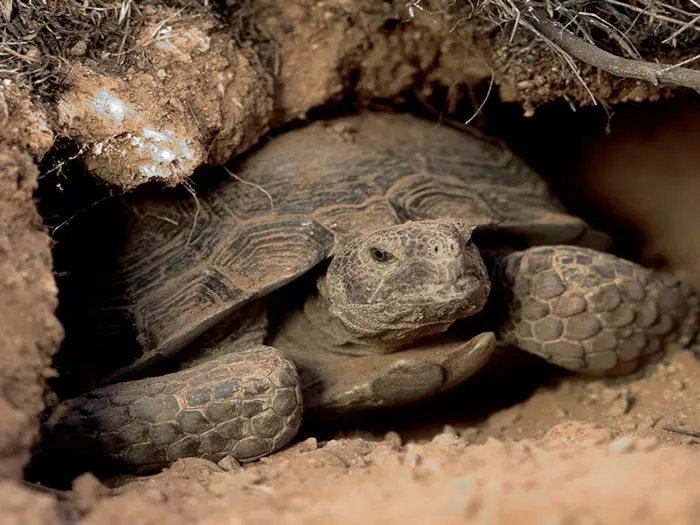
4. Strong feet
A tortoise’s feet are thick, short, and scaly, allowing the retile to walk on hot sand. The toes on a tortoise’s front feet are both scaly and horned, enabling the animal to dig into the ground.
5. Behavior
Tortoises that live in arid areas have developed an adaptive behavior called estivation. During estivation, a tortoise stays inactive and dormant for several days to conserve water.
Another adaptive behavior tortoises use is hibernation. Hibernating is vital because it helps them conserve energy.
What Challenges Do Tortoises Face In Their Wild Habitats?
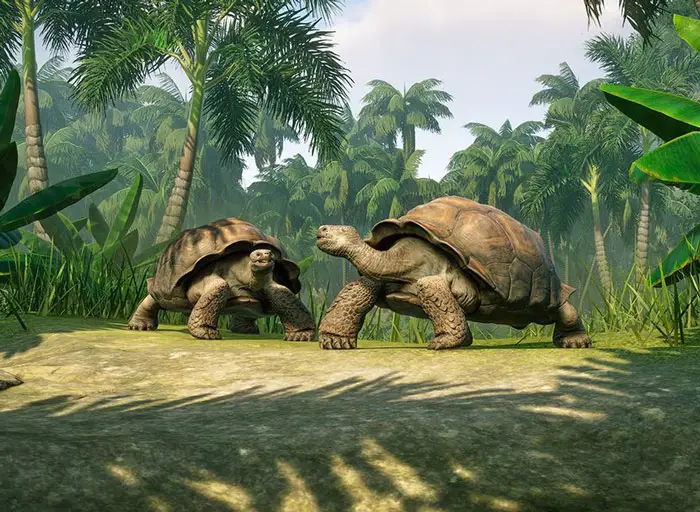
Tortoises face many challenges in the wild, including;
Predators
Since they are incredibly slow, tortoises are a relatively easy target for predators like coyotes, roadrunners, and snakes. These predators prey on young tortoises whose shells haven’t fully developed.
Habitat loss
The expansion of human civilization has destroyed many tortoise habitats like wetlands, savannahs, and forests. This encroachment leaves tortoises with nowhere to live and nothing to eat or drink. It also destroys tortoise breeding grounds, threatening their populations.
Climate change
Climate change is actively changing established weather patterns, affecting the availability of food and water for tortoises. The increasing global temperatures can also make it hard for tortoises to regulate their body temperatures.
Poaching
Humans have been eating tortoise meat for thousands of years, and their shells are highly sought after. This demand inevitably results in the poaching and illicit trade of tortoises.
What Efforts Are Being Made To Conserve Tortoise Habitats?
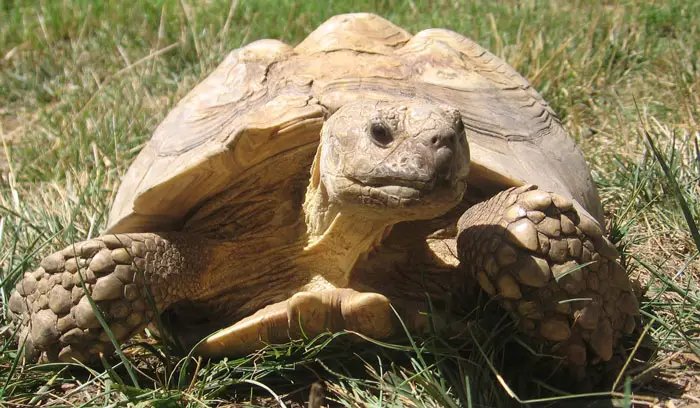
Various efforts are being made to conserve tortoise habitats around the world, including;
1. Habitat restoration
Tortoise habitats like wetlands and forests that human activities have decimated are now getting restored through reforestation.
2. Establishment of protected areas
Areas like game parks and reserves are now protected by law. This protection reduces human activity in these areas, thereby saving tortoise habitats.
3. Educating the public
Several outreach programs have been established to teach communities the importance of conserving tortoise habitats. They also educate the public about sustainable hunting practices.
4. Research
There is ongoing research to understand the biology and behavior of tortoises. This research will ultimately be used to develop more effective conservation strategies.
FAQs
Here are some answers to common questions about where tortoises live in the wild.
No, tortoises are exclusively land animals. The only time they are comfortable near water bodies is when drinking.
Tortoises usually lay eggs in a hole in the ground. The females find an ideal location, dig the hole, lay the eggs, cover up, and then let the eggs incubate.
Giant tortoises are only found on the Galapagos Islands. Though some live in the highlands, most prefer dry lowlands habitats.
Conclusion
Tortoises live in many different habitats in the wild. Some live in deserts and dry grasslands, while others prefer forests, wetlands, and mountains. Wherever they live, tortoises are uniquely adapted to survive, with hard shells, strong digging feet, and the ability to hibernate.
Some common challenges tortoises face in the wild include predation, poaching, and habitat loss due to human encroachment. Fortunately, conservationists worldwide are trying to restore habitats and reduce poaching.

